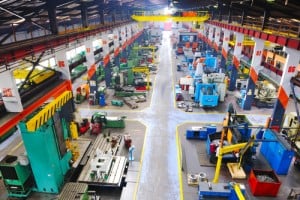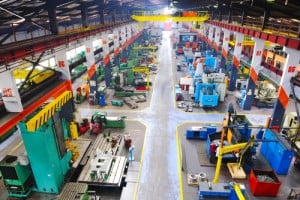How Recipes and Specs Impact Your Entire Company – Part 1
Everyone knows recipes and specifications. They know that they have them and they use them and so on. And, they know that they have a group or department, probably part of R&D, that’s ultimately responsible for all the recipes and specifications.
But, what most people probably don’t know is how widespread the use of the recipes and specifications are throughout the company. While it’s true that only a very small number of people in R&D can actually change a recipe or specification, the number of people in the company that use recipes and specifications is quite large. 
In fact, I would say that just about every single person in the company uses some part of a recipe or specification at some time or another. Now, your initial reaction is probably, “no way – that’s not right.” But think about it. Think about all the difference kinds of jobs that people do throughout the company and how they might use recipes and/or specifications.
The finance people need to know about recipes because different recipes use different financial models and have different costs. The purchasing people need to know the specifications because they are purchasing materials that must meet those specifications. The maintenance people need to know the specifications to make sure they maintain the equipment so as to achieve the specifications. The engineering people need to know the recipes and specifications to make sure they design or purchase equipment or processes that can follow the recipes and achievethe specifications.
The QA/QC people surely need to know the recipes and specifications sincethey are the people that are responsible for quality control to make sure thatthe raw materials, WIP materials, and finished products do in fact meet the specifications.
And, maybe most importantly, everyone on the shop floors needs to know the recipes and specifications (or at least their relevant parts of them)because they are the people that are actually making the products using the recipes that have to ultimately achieve the specifications.
I could go on and on and talk about all the other people in the company thatuse the recipes and specifications. The list is almost endless. Almost every single person in the company uses the recipes and specifications in someway at some time or the other. It’s mind-boggling how many people in the company use the recipes and specifications at some time or another.
Now, I said all that to get you thinking about how all those people even see or have access to the recipes and specifications. Mostly it’s probably onpaper. Usually there’s lots of paper and often times little bits of paper where they wrote down the key data that they need.
The problem with all this is what happens when they don’t have the datafrom the recipes or specifications that they need or they don’t have the right data or they don’t know that they data they do have is incorrect or has been changed and on and on.
And, with all this paper there’s lot of room for errors and mistakes of all kinds with the wrong data, incorrect data, incomplete data, lost pieces ofpaper, and so on.
So, I’d like to get you to simple start thinking about all these people that usethese recipes and specifications and what’s the best way to make sure that they have the information that they need. There’s lots of different solutions that are possible but I’d just like to mention a few things for you to think about.
On one end of the spectrum are recipe and specification management systems. Most of these systems are geared toward creating, managing,editing, reviewing, and approving recipes and specifications. But, they all usually have a view-only option for specific classes of users. In many cases they may be way more than you need if you’ve already got the management capabilities in place.
At the other end of the spectrum are simple view-only dashboard orvisualization tools. These don’t have any of the management capabilities and are just a simple tool to see data that you’ve already got stored somewhere in a database. But, if you already have the management processes in place and you don’t need any of that, simply using one of these tools is a great way to let everyone see the recipe and specification data that they need. Very simple and very clean.
So, I know this is a lot to throw at you and you’re probably still trying to decide whether or not you believe me when I say that just about everyone in the company uses recipes and specifications. But, I think it’s something to think about. And, if you find you’re having some problems with recipe sand specifications, it’s probably worth looking into. And, you probably don’t need a big recipe or specification management system, but most people do need some simple ways to let everyone view the recipes and specifications when they need to.
So, think about all this, take a look around the company and see what you find, and let me know.



